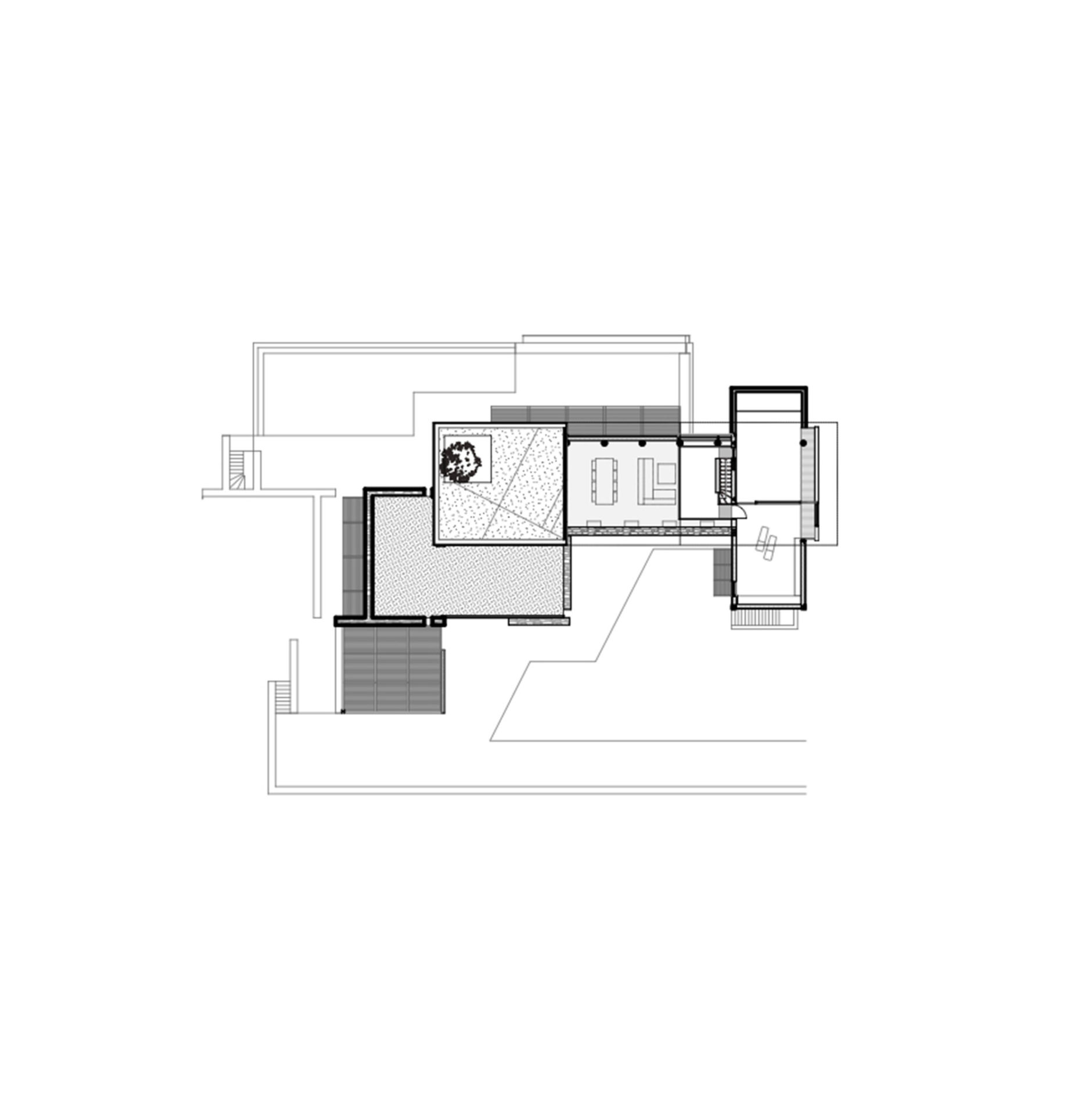Completed in 2014, these outstanding residences were created for two brothers and their families by a firm named Z-level, and they are located in Agios Fokas, Greece. Surrounded by beautiful olive trees, the residences boast exceptional views of the sea and are both connected at roof level. Even though they were both built using variations of the same design, one building offers 1,614 square feet of living space while the other provides 2,690 square feet.
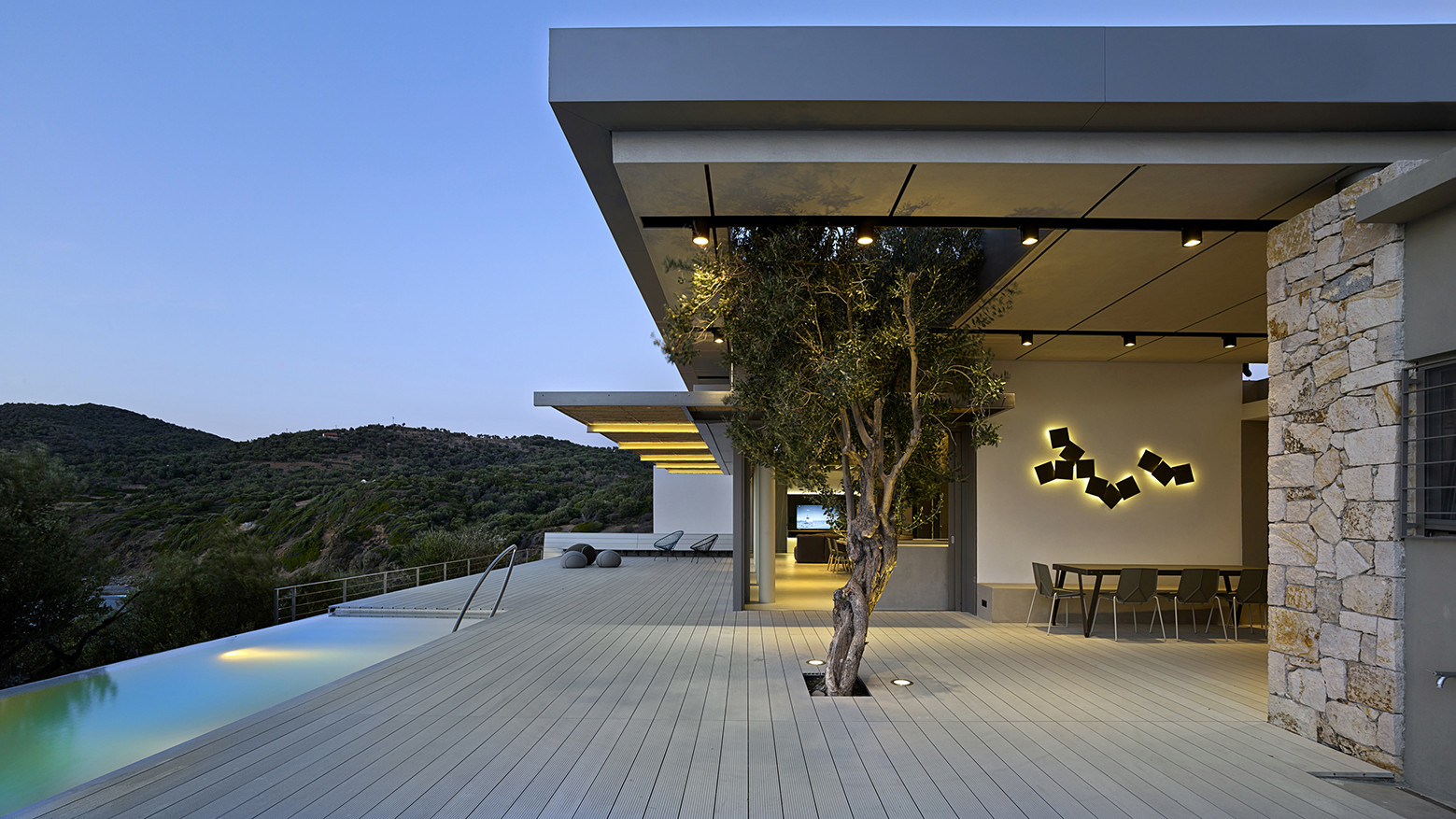
Their outdoor spaces were designed to be independent from the interior ones, and they include vegetable gardens, outdoor kitchens, eating spaces and bathroom areas. Inside, sizeable windows ensure that all rooms are adequately illuminated, while sliding doors help fade the limits between the indoors and outdoors. Even though the residences are located close to the sea, they still feature their own swimming pools.
They were built using locally sourced materials such as Polychnitos stone. Sustainability is ensured by contemporary heating systems.


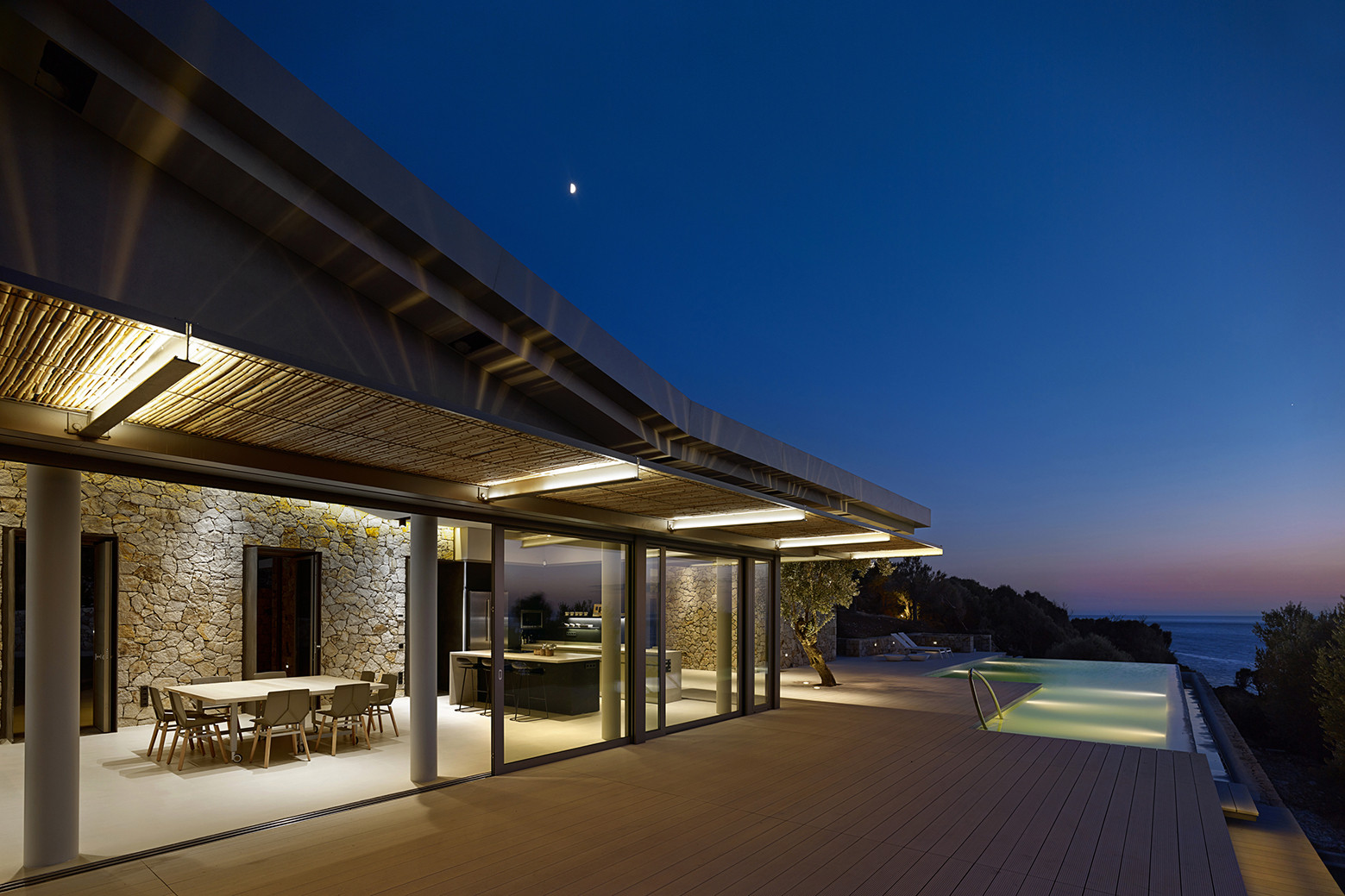
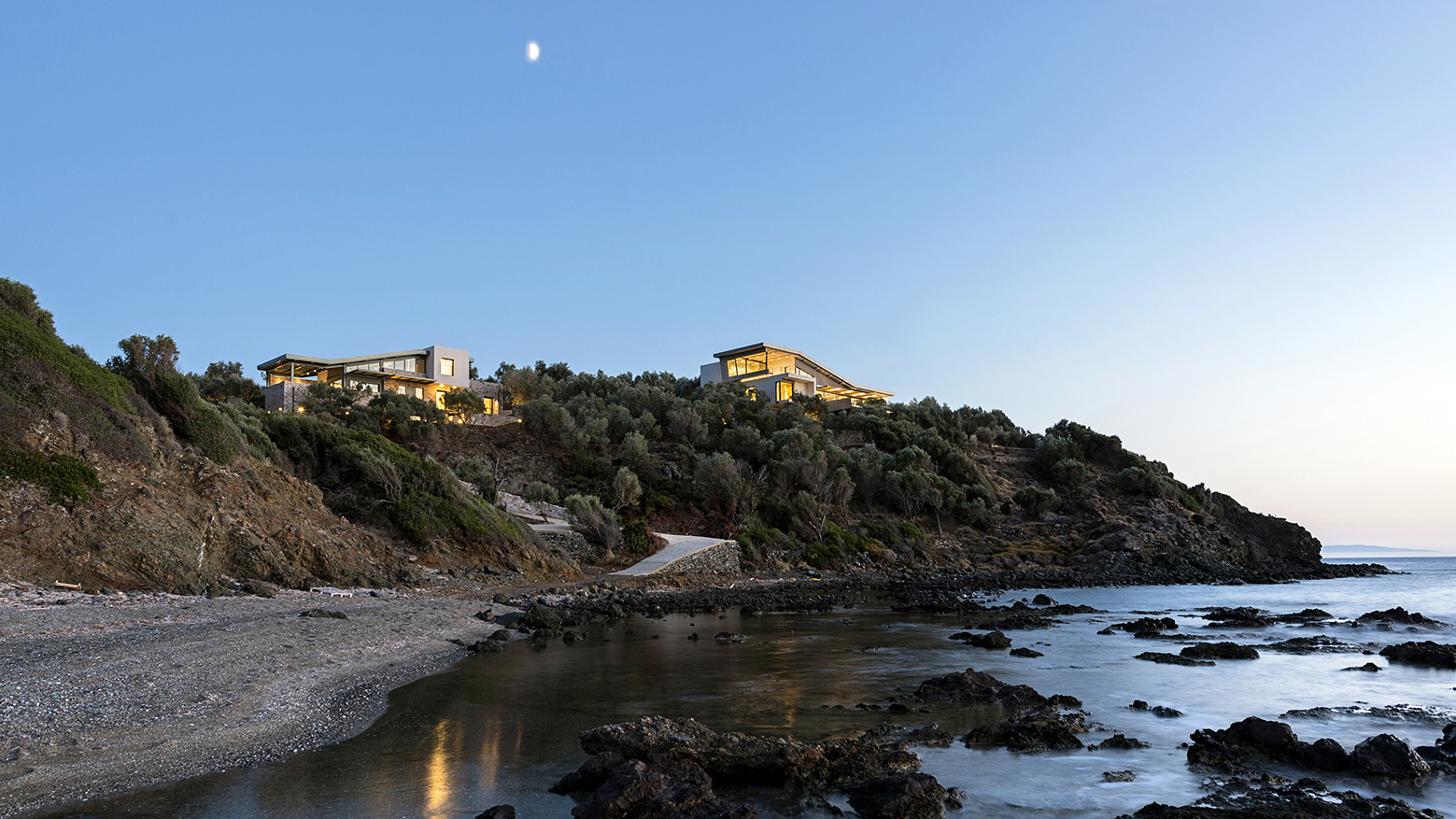
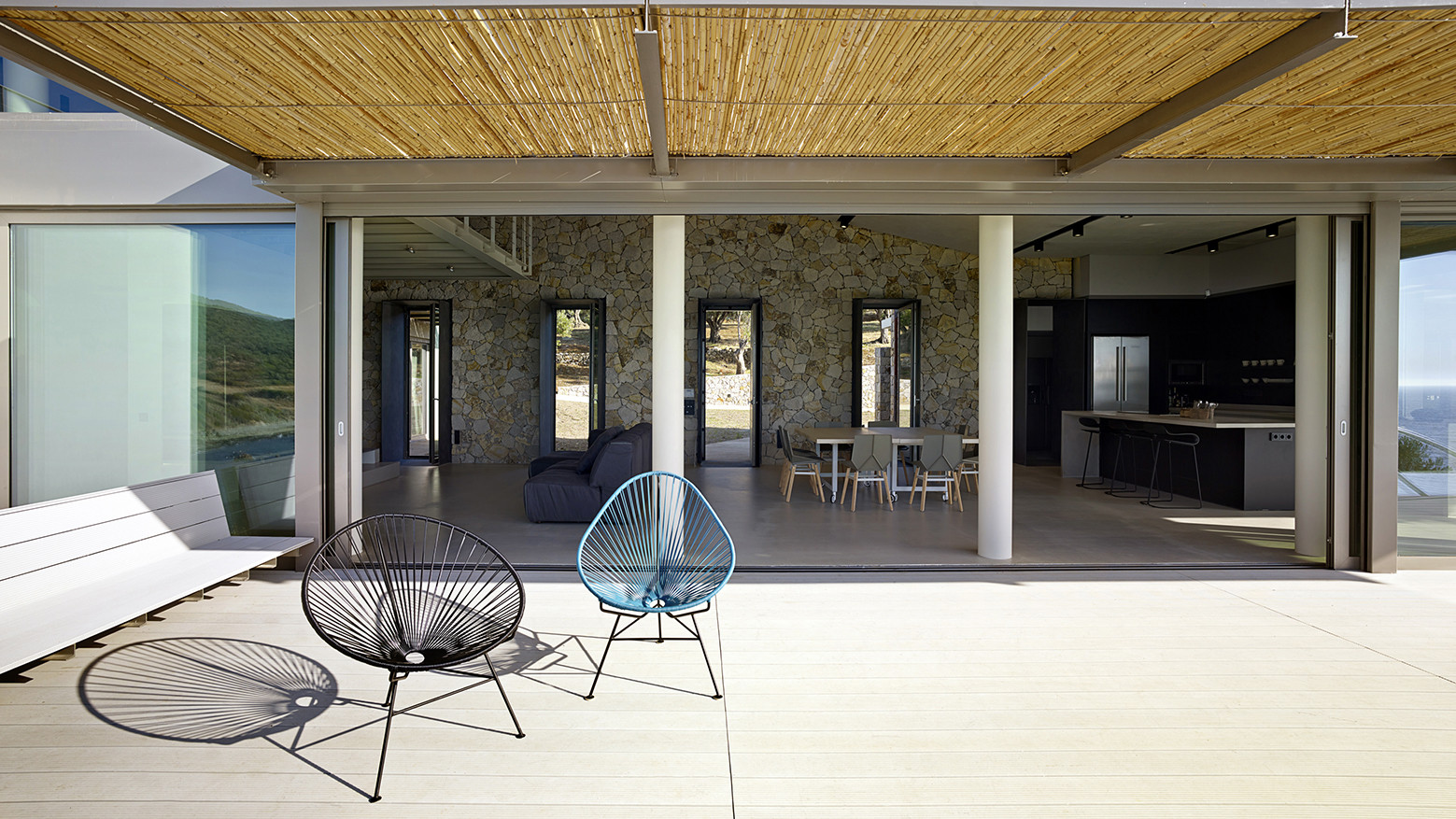
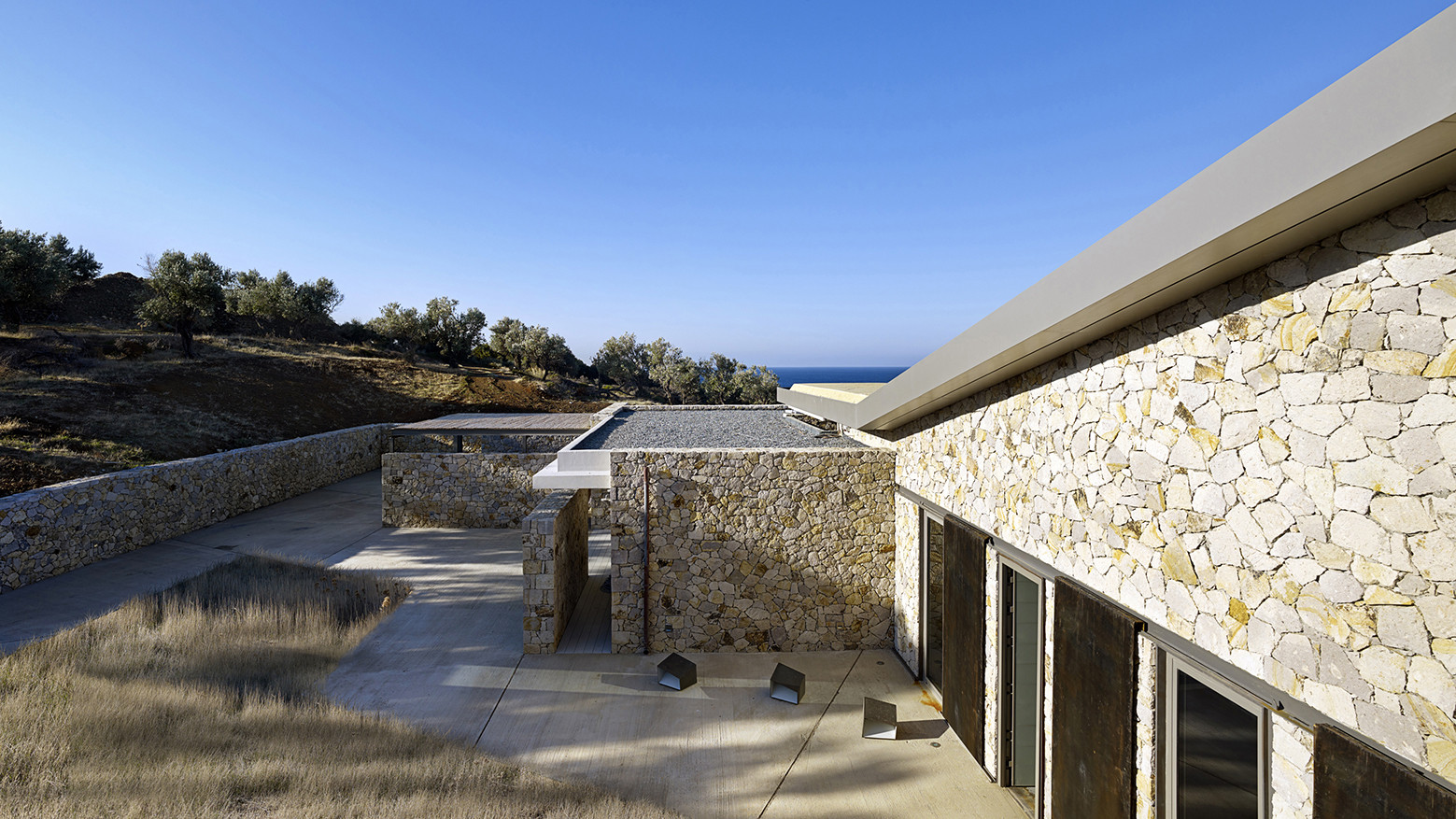
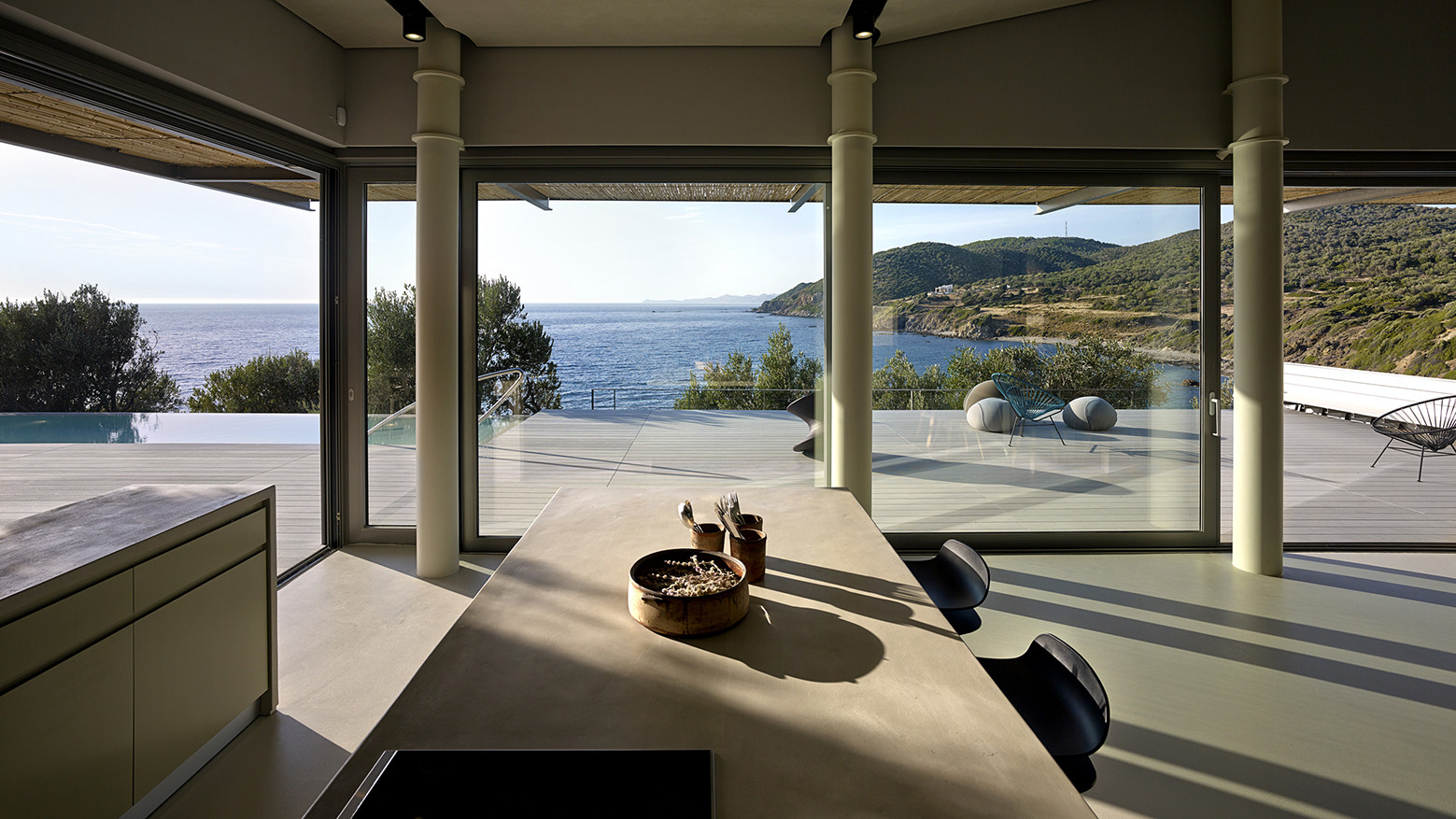
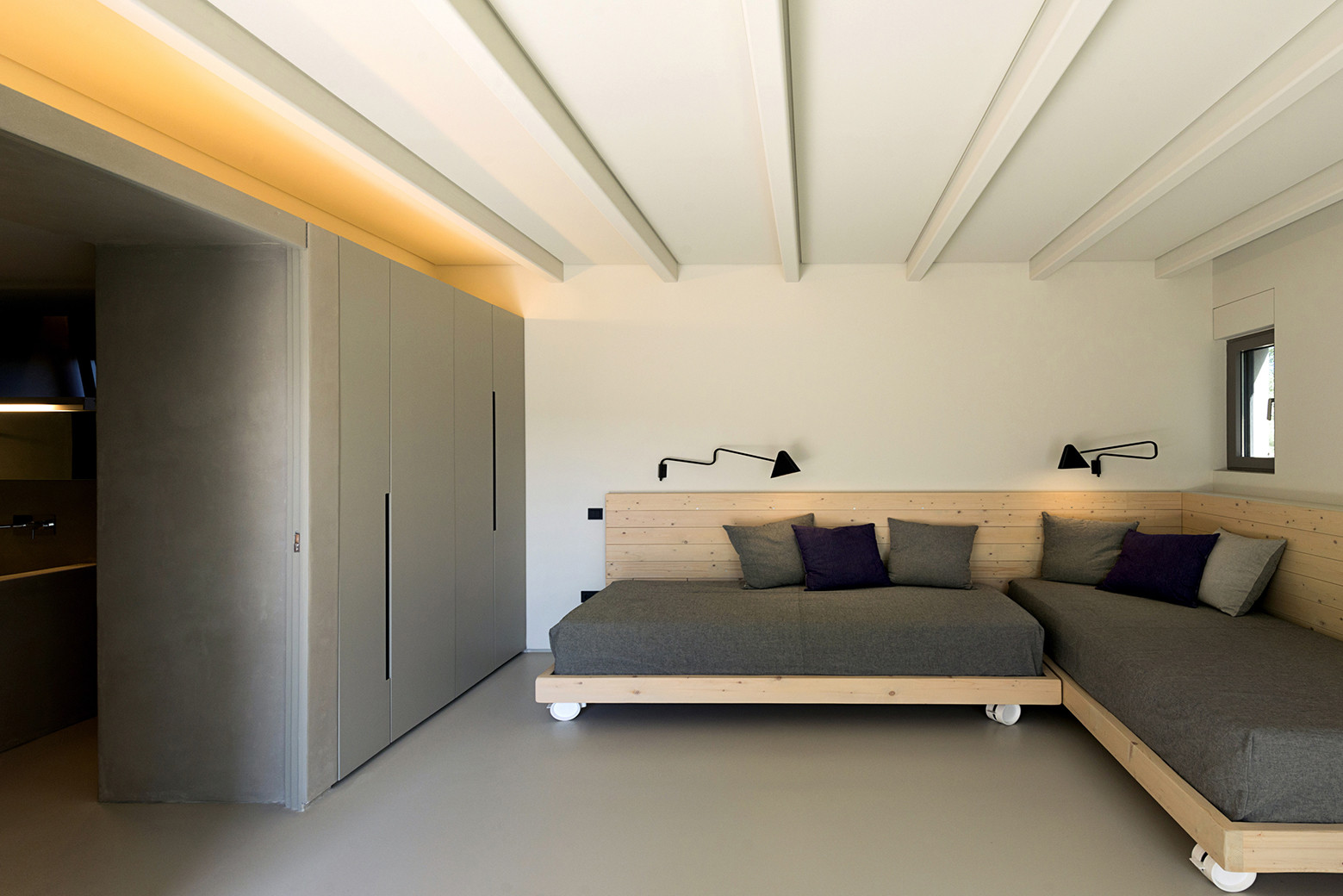
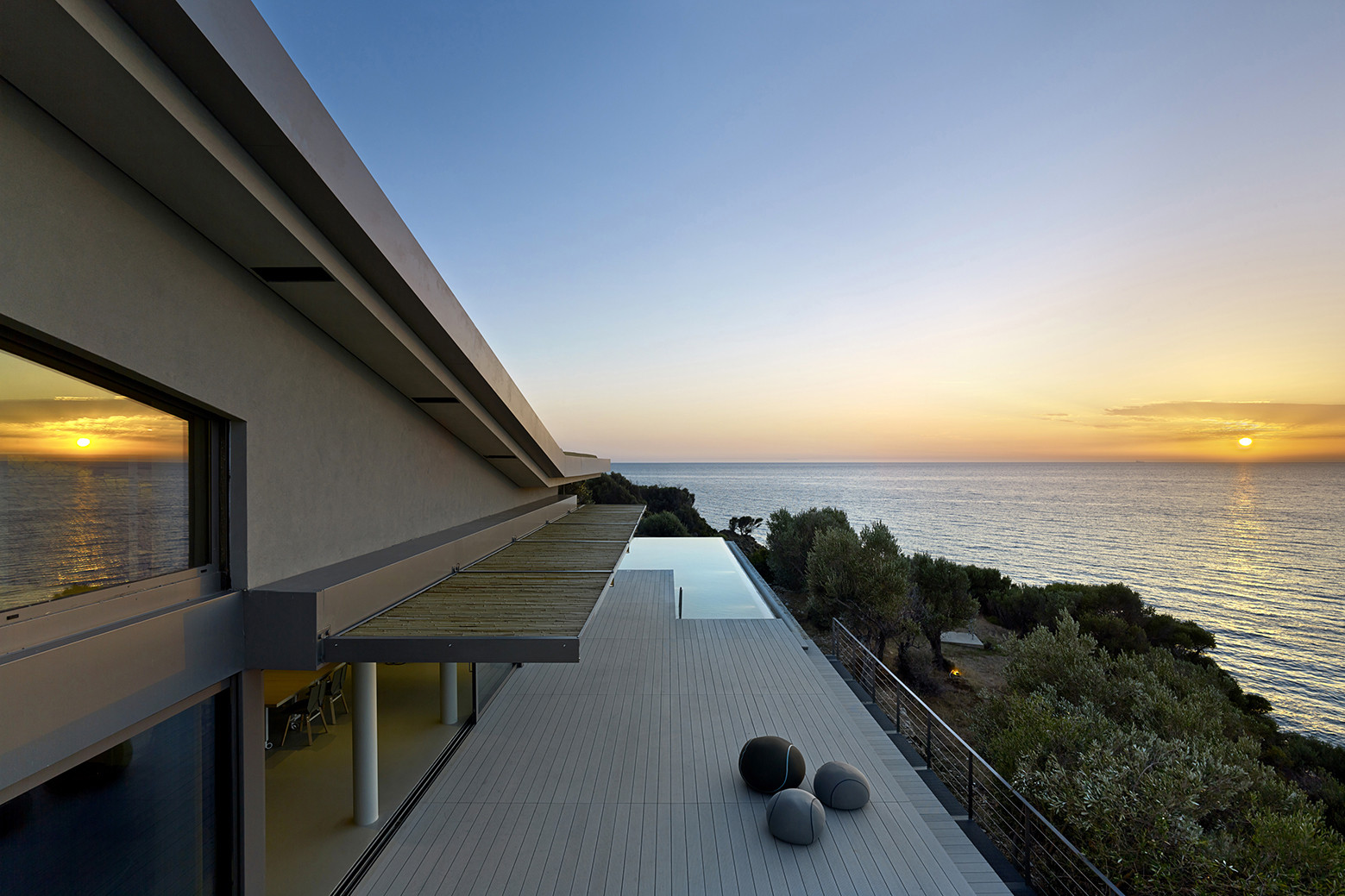

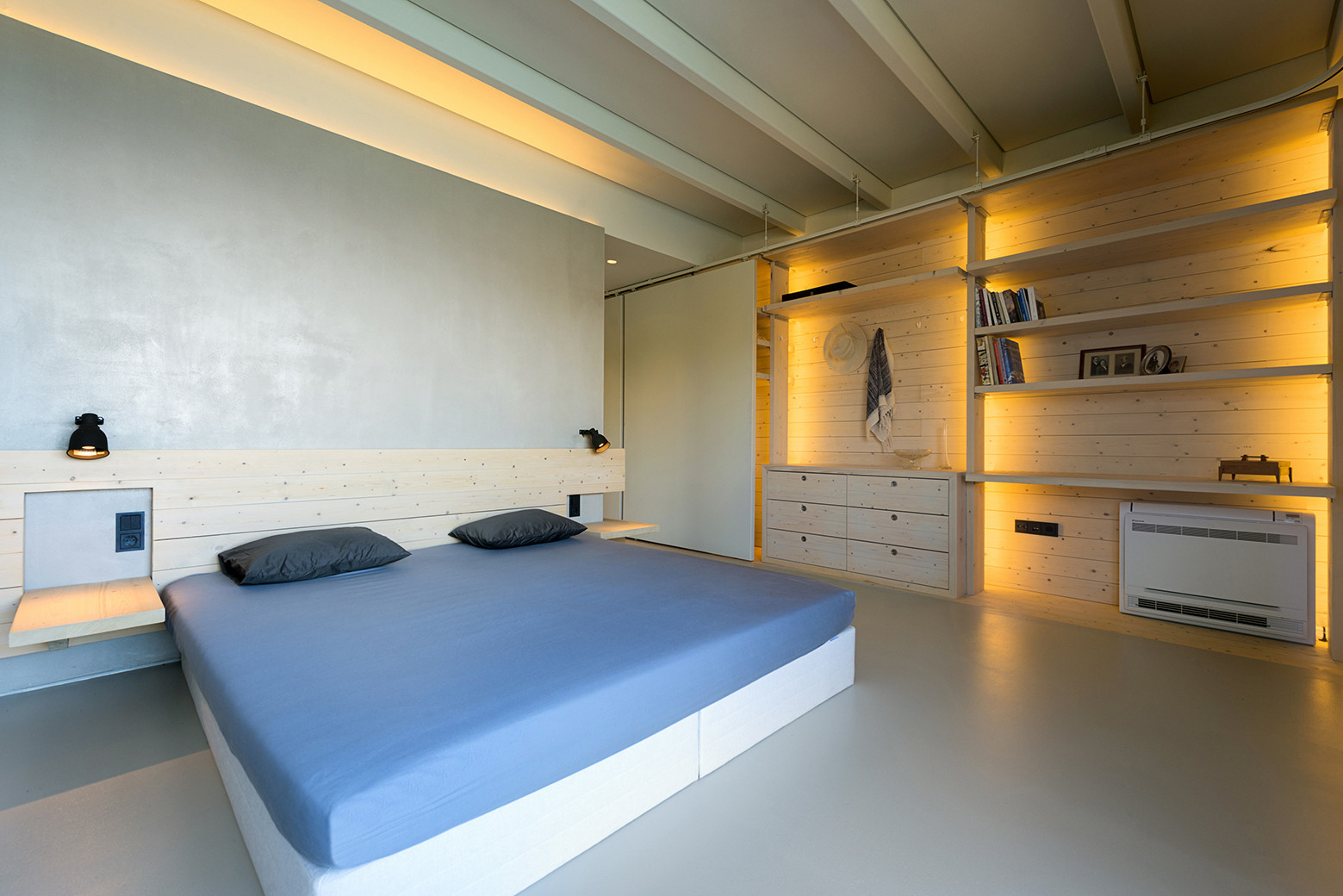
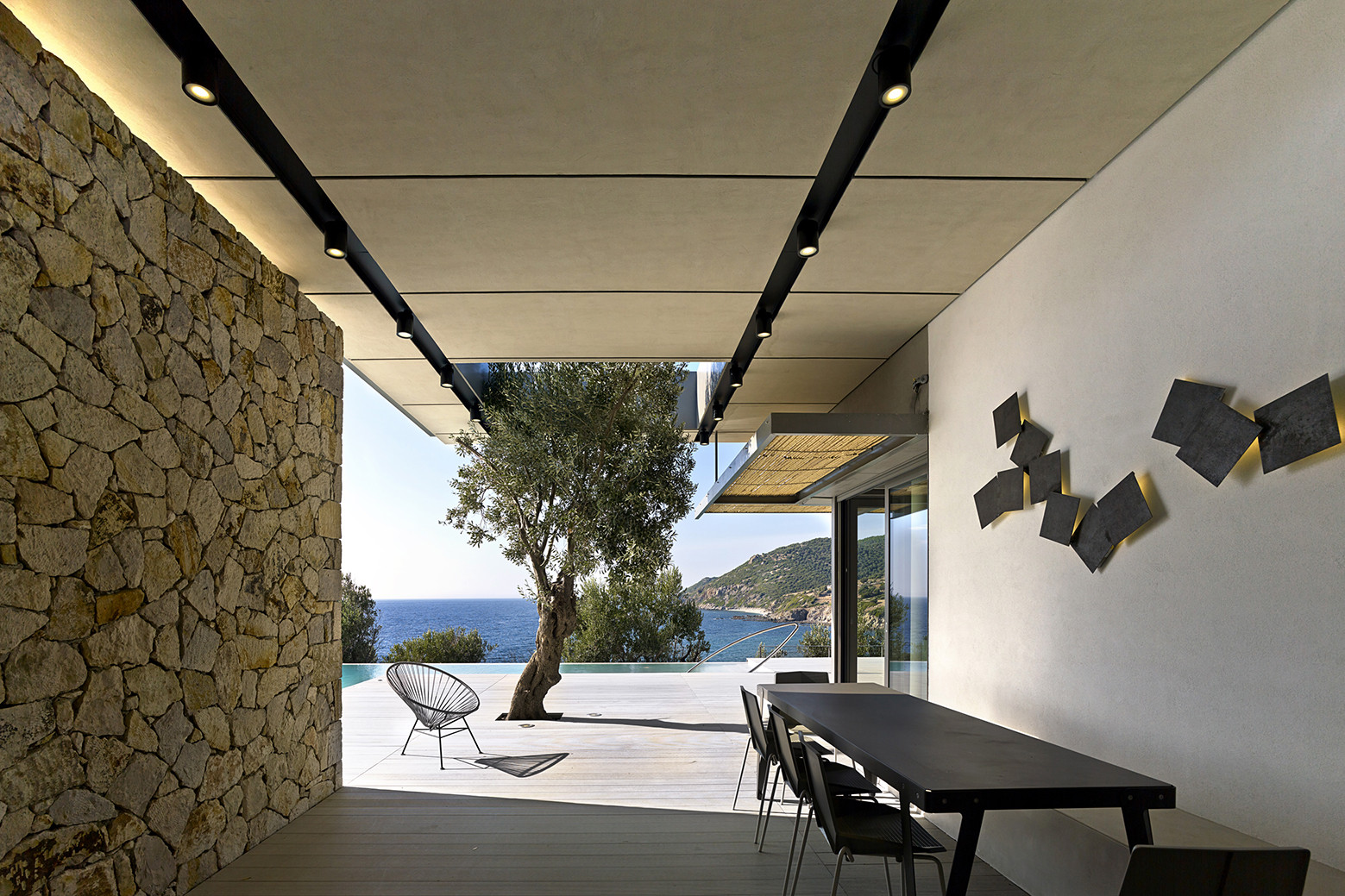
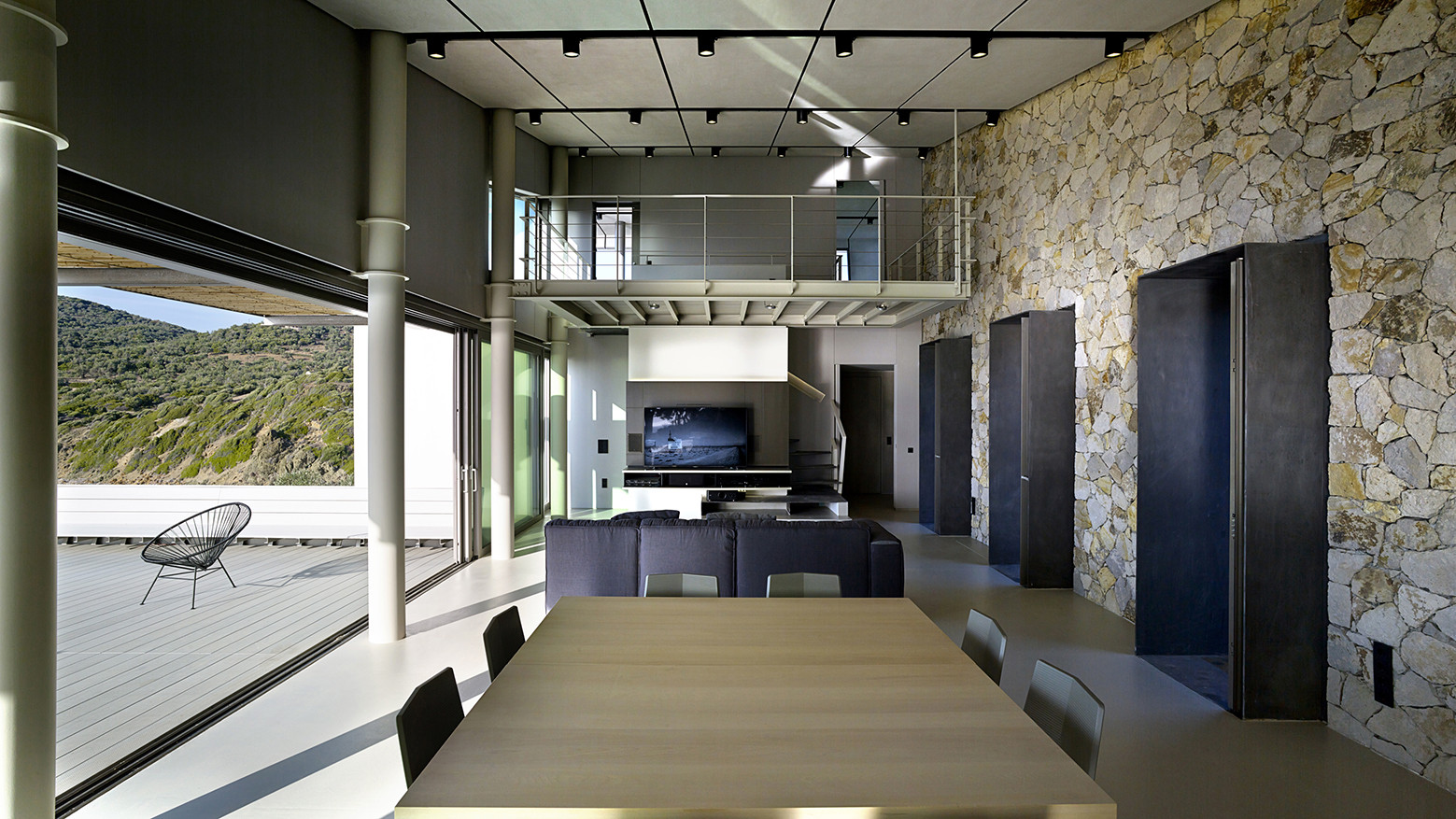
From the architect:
This project is located on the point of Agios Fokas on the south-western side of the island of Lesvos, on an agriculturalgreenfield site amongst the olive groves. The only structures of the area are small agricultural buildings – ntam”. Topographically, the 3.5hectare seaside plot is on an incline and planted with 300 olive trees. The owners, two brothers and their families, are city dwellers, used to living in Athens and Boston, decided to forge new bonds with the land of their ancestors.
The basic issues of the design were incorporating the residences in the topography of the landscape; low-impact accessibility; developing a dialectic between the two buildings; making use of the unconfined view; incorporating bioclimatic elements; and using natural materials. The design was intended to re-interpret local vernacular references, which are not drawn from traditional residential architecture on Lesvos, but from early industrial buildings located there. The dominant theme was how to handle an exceptional site with favourable conditions in difficult times.
The residences were situated with an eye to incorporating them in the hillside, placing them below the level of the skyline, in the olive grove, leaving the landscape that surrounds them intact. Of the 3.5 hectares that comprise the plot, 600 sq.m. were covered by hard materials, while the remaining land was left covered by earth, and the old olive grove terraces were recorded and repaired.
The residences were placed parallel to the elevation contour lines, between the end of the olive grove and the start of the seaside terrain, functioning as a passage from the land to the sea. This zone allows a flow of the landscape and marks the boundary between a solid and a light side: the elevation facing the olive grove is stone, with openings that isolate segments of the landscape, while the elevation facing the sea in transparent and unified.
The building appears to rise from the ground in which it is rooted on the side of the olive grove and to levitate on the side of the sea. As you approach the building and walk through it, its spaces unfold like a movie, and the sea appears gradually, framed initially by openings of the stone elevation; then through shady arcades and deep verandas, that protect from the sun; and, finally, the view opens up on the platform above the cliff.
The two buildings are connected at the level of the roofs, which constitute a conceptual continuity, following the shape of the hill on a lower level. Both buildings were designed using the same design principles and comprise variations on a theme, being respectively 150sq.m. and 250sq.m. builds.
The houses are on the ground level and shaped as elongated rectangles, designed on the bioclimatic principles of using openings on either side, ventilation and shading. The multi-level inclined roof creates a single room space at its highest point, with an open balcony that faces the interior of the residence. This final level has glass sides with opening segments which help remove the warm air by drawing it away.
Maintaining the interior and exterior spaces at the same level fosters a sense of cohesion and flow, while also allowing access for the handicapped, who have access to all areas. The pool was created to be enjoyed by those who have difficulty getting down to the sea. The outdoor areas are designed to be autonomous from the interior, to suit the requirements of the owners and their visitors, with an outdoor kitchen, a vegetable garden, as well as seating, eating and bathroom areas, as well as the facilities for outdoor film showings.
The weight-bearing structure is metal and the filling materials stone and light wall-building with external insulation façade. Local materials were used, including Polychnitos stone and natural earths to colour the cement on the roof and the roads. Sustainable heating systems were also used.
Architects: Z-level
Location: Agios Fokas, Greece
Architect in Charge: Elena Zervoudakis
Design Team: Aggelos Aggelou, Polyxeni Papamihelaki
Project Year: 2014
Photographs: Yiorgis Yerolybos
Structural Engineers: Dimitris Arnellos, Mary Kazakou
Construction: Technima Aigaiou, Metalopoiisi, Xylarmogi
Area: residence1:250m², residence 2:150m²
Site Area: 35.000m²

